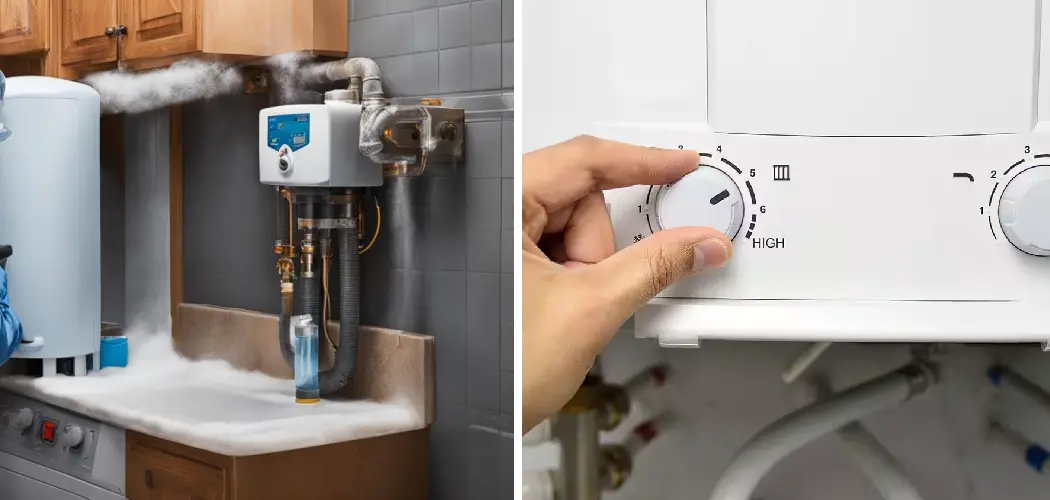In order to keep your tankless water heater running in top condition, regular maintenance and cleaning is essential. One of the most important tasks that should be performed on a tankless water heater is defrosting. This process involves removing any ice build-up that has accumulated within the unit, which can cause damage if left untreated.
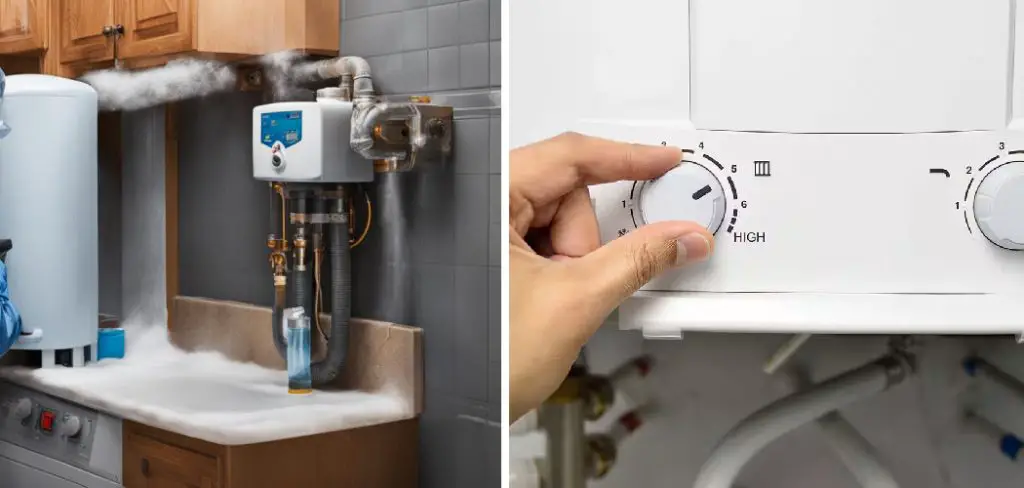
In this guide, we will discuss the steps on how to defrost a tankless water heater.
Importance of Defrosting
Defrosting a tankless water heater is crucial for several reasons. First, ice build-up can block the flow of water and prevent the unit from functioning properly. This can result in reduced hot water supply or even complete failure of the system. Additionally, freezing temperatures can cause damage to the internal components of the water heater, leading to costly repairs or replacement.
Necessary Items
Before starting the defrosting process, it is important to gather all necessary items. These may include:
- A bucket or large container
- Towels or rags
- A hair dryer or heat gun (optional)
- Warm water
12 Steps on How to Defrost a Tankless Water Heater
Step 1: Turn off the Water Supply
The first step is to turn off the water supply to the tankless water heater. This will prevent any additional water from entering and potentially freezing within the unit. It will also allow you to work safely on the unit without any water flow.
Step 2: Turn Off the Power
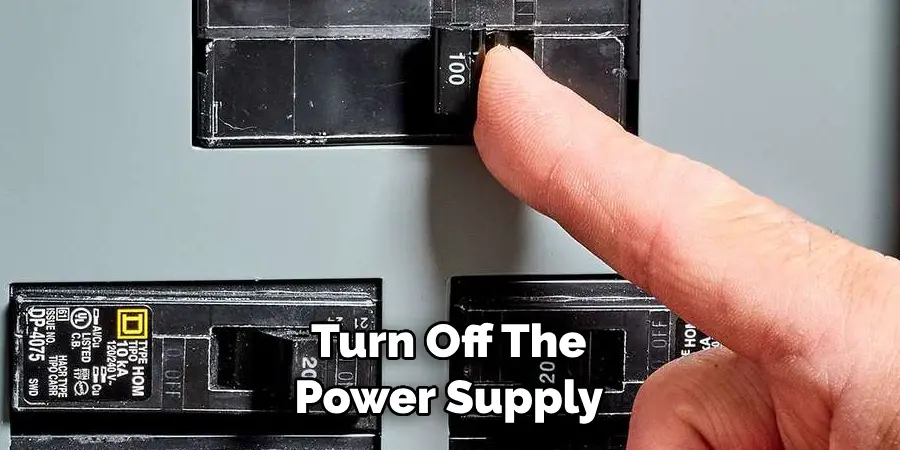
Next, turn off the power supply to the tankless water heater. This may involve unplugging the unit or shutting off the circuit breaker that controls it. It is important to make sure the unit is completely powered off before proceeding with defrosting.
Step 3: Locate the Drain Valve
The drain valve is typically located at the bottom of the tankless water heater. It may be a small spout or knob that can be turned to open and close. So, locate the drain valve and make sure it is easily accessible.
Step 4: Connect a Hose
Attach a hose to the drain valve. This will allow any melted ice or water to be safely drained away from the unit. Make sure the other end of the hose is placed in a bucket or outside where water can freely flow.
Step 5: Open the Drain Valve
Open the drain valve to allow any water within the unit to start draining out. As the water starts to drain, you may notice pieces of ice coming out as well. Some tanks also have a small drain cap on the side that may need to be opened as well.
Step 6: Wait for Water to Drain Out
Depending on how much ice build-up there is, it may take some time for all the water to drain out. Be patient and let the water fully drain before moving on to the next step. While waiting, you can also use a hair dryer or heat gun to gently warm up the unit and help with melting any remaining ice.
Step 7: Close the Drain Valve
Once all the water has drained out, close the drain valve. Make sure it is fully closed and secure. Then, remove the hose from the drain valve. Even if the valve is closed, it is a good idea to place a bucket or container under it in case any residual water drips out.
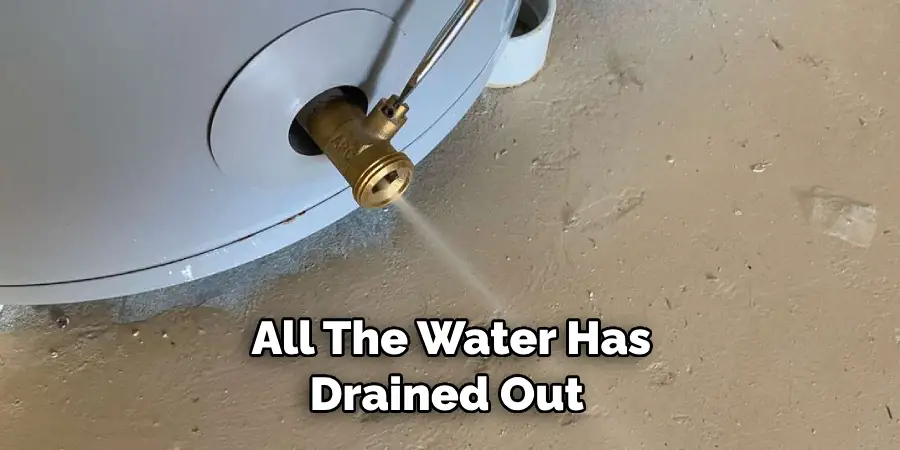
Step 8: Inspect the Unit
Take a careful look at the tankless water heater and make sure there is no ice or frost remaining on the unit. If you notice any areas that still have ice, use a hair dryer or heat gun to gently melt it away.
Step 9: Use Warm Water
If there are still ice build-ups that are stubborn and hard to remove, you can use warm water to help break them down. Avoid using hot water, as this can damage the unit. Instead, fill a bucket with warm water and pour it over the remaining ice until it melts away.
Step 10: Wipe the Unit
Once all the ice has melted, use towels or rags to wipe down the unit and remove any remaining water. Make sure every part of the tankless water heater is dry before moving on to the next step. Either wait for the unit to air dry or use a cloth to wipe away any moisture.
Step 11: Turn on the Power and Water Supply
After the unit is completely dry, turn on the power supply and water supply. Wait for a few minutes to allow the tankless water heater to fully start up again. You may also want to check for any leaks or issues with the unit before fully using it again.
Step 12: Schedule Regular Maintenance
Lastly, make sure to schedule regular maintenance for your tankless water heater. This will help prevent any future build-up of ice and keep it functioning properly. A professional plumber can also provide additional tips on how to maintain and care for your specific tankless water heater model.
Regularly defrosting a tankless water heater is essential for keeping it running smoothly and avoiding any potential damage. By following these 12 simple steps, you can easily and safely defrost your unit and ensure it continues to provide hot water when needed.
Remember to also schedule regular maintenance to keep your tankless water heater working efficiently for years to come. So, make sure to prioritize this important task and keep your tankless water heater in top condition for all your hot water needs.
9 Safety Measures to Follow
1) Turn Off the Power and Water Supply
Before starting the defrosting process, make sure to turn off the power supply and water supply to the tankless water heater. This will prevent any accidents or damage to the unit. Also, be sure to keep the unit away from any electrical outlets or sources of water.
2) Wear Protective Gear
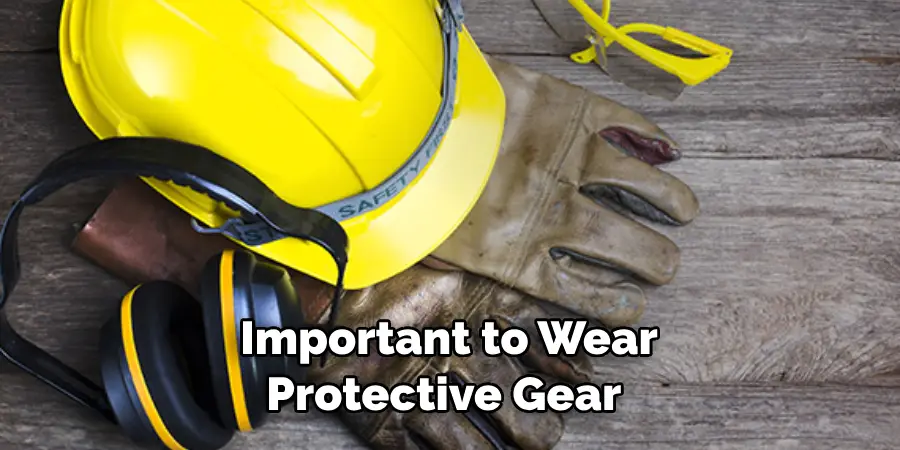
It is always important to wear protective gear when handling any household appliances. This can include gloves, safety glasses, and even a face mask if chemical products are used during the defrosting process.
3) Use Caution with Heated Tools
If using a hair dryer or heat gun to defrost the unit, use caution and avoid placing them too close to any electrical components. Also, make sure to unplug these tools when not in use to prevent any accidents.
4) Be Mindful of Water Damage
As you are draining the water from the tankless water heater, be careful not to spill or splash any water on the surrounding area. This can lead to potential water damage and should be avoided. Even when wiping down the unit, be mindful of any water that may drip onto the floor.
5) Follow the Manufacturer’s Instructions
Always refer to the manufacturer’s instructions for your specific model of tankless water heater. This will provide important safety information and specific steps to follow for defrosting. However, if you are unsure or uncomfortable with the process, it is best to consult a professional plumber.
6) Use Warm Water, Not Hot
When using warm water to melt ice build-up, make sure it is not too hot. Hot water can damage the unit and its components. It is best to use lukewarm or room-temperature water for this step. If using a heat gun, use caution and avoid placing it too close to the unit.
7) Avoid Using Chemicals
While some sources may suggest using chemicals to help melt ice, this can be dangerous for both you and your tankless water heater. It is best to stick to warm water and gentle methods to avoid any potential damage or safety hazards.
8) Don’t Rush the Process
It is important to be patient during the defrosting process. Rushing or using excessive force can lead to damage or accidents. Allow enough time for all the ice to melt and drain out before moving on to the next step.
9) Seek Professional Help if Needed

If you are unsure of how to properly defrost your tankless water heater or encounter any issues during the process, it is best to seek professional help. A licensed plumber can safely and efficiently defrost your unit and provide valuable maintenance tips for the future.
Remember to always prioritize safety when handling any household appliances, including tankless water heaters.
By following these 9 safety measures on how to defrost a tankless water heater, you can ensure a successful and safe defrosting experience for your tankless water heater. So, always be cautious and take the necessary precautions to keep yourself and your unit safe.
8 Things to Avoid
1) Using Hot Water to Defrost
As mentioned before, using hot water can cause damage to your tankless water heater. It is important to only use warm or room temperature water during the defrosting process. There is also a risk of burns if hot water is accidentally spilled or splashed on your skin.
2) Using Sharp Objects
It may be tempting to use sharp objects, such as ice picks or knives, to remove ice build-up. However, this can cause damage to the unit and potentially create leaks. It is best to stick to gentler methods, like warm water or a hair dryer, to melt the ice.
3) Using Excessive Force
Trying to force open any frozen parts of the unit can also lead to damage. The ice will eventually melt, so it is best to be patient and avoid using excessive force. Even when wiping down the unit, use gentle motions to avoid causing any unnecessary damage.
4) Using Chemicals

As mentioned before, using chemicals can be dangerous and potentially harmful to both you and your tankless water heater. It is best to avoid using them altogether during the defrosting process. Like hot water, they can also cause damage to the unit’s components.
5) Not Turning Off the Power
It is crucial to turn off the power supply to your tankless water heater before starting the defrosting process. If this step is skipped, there is a risk of electric shock or potential damage to the unit. As a safety precaution, always remember to turn off the power.
6) Neglecting Regular Maintenance
Defrosting is an important maintenance task, but it should not be the only one. Regularly scheduling maintenance checks with a professional plumber will ensure your tankless water heater continues to function properly and efficiently. Neglecting this can lead to potential issues and costly repairs in the future.
7) Not Following Manufacturer’s Instructions
Ignoring or not following the manufacturer’s instructions can also lead to damage and safety hazards. Always refer to the instructions specific to your tankless water heater model before attempting any maintenance tasks, like defrosting.
8) Attempting Complex Repairs on Your Own
If you encounter any issues during the defrosting process, it is best to seek professional help. Attempting complex repairs on your own can lead to further damages and potential safety hazards. It is always better to be safe than sorry when it comes to handling household appliances. So, don’t hesitate to call a licensed plumber for assistance if needed.
Following these precautions and avoiding these mistakes will ensure a safe and successful defrosting experience for your tankless water heater. Keep these tips in mind and prioritize safety when handling any maintenance tasks for your household appliances. So, always be cautious and take the necessary precautions to keep yourself and your unit safe.
8 Additional Tips for Maintaining Your Tankless Water Heater
1) Regularly Check and Clean Air Filters
Air filters play an important role in the proper functioning of a tankless water heater. Over time, they can become clogged with dust and debris, reducing the unit’s efficiency. It is recommended that these filters be checked and cleaned every few months.
2) Flush the Unit Annually

Flushing your tankless water heater annually helps remove mineral deposits and debris that can build up over time. This will help maintain its efficiency and prolong its lifespan. Even if you don’t notice any issues, it is still recommended to flush the unit annually as a preventative measure.
3) Keep the Combustion Area Clear
The combustion area of a tankless water heater needs proper ventilation in order to function correctly. Make sure this area is always clear of any obstructions or debris that could potentially hinder airflow and cause issues with the unit.
4) Monitor Water Pressure
Excessively high or low water pressure can cause damage to your tankless water heater. It is important to regularly monitor the pressure and adjust it accordingly to ensure the unit is functioning properly. If you are unsure of how to do this, a licensed plumber can assist you.
5) Insulate Pipes for Cold Weather
During colder months, it is important to insulate the pipes connected to your tankless water heater. This will help prevent freezing and potential damage to the unit. Insulation can also help conserve energy and save on utility costs.
6) Schedule Regular Maintenance Checks
Aside from annual flushing, it is recommended to schedule regular maintenance checks with a licensed plumber for your tankless water heater. They can identify any potential issues and make necessary repairs to keep your unit functioning at its best.
7) Keep the Unit Clean
Regularly cleaning the exterior of your tankless water heater will not only improve its appearance but can also help prevent dust and debris from entering the unit. Make sure to use gentle cleaning products and avoid harsh chemicals.
8) Consider Installing a Water Softener
Hard water can be damaging to tankless water heaters, as it contains high levels of minerals that can build up and cause issues. Installing a water softener can help prevent this and prolong the lifespan of your unit. Consult with a plumber to determine if this is necessary for your household’s water supply.
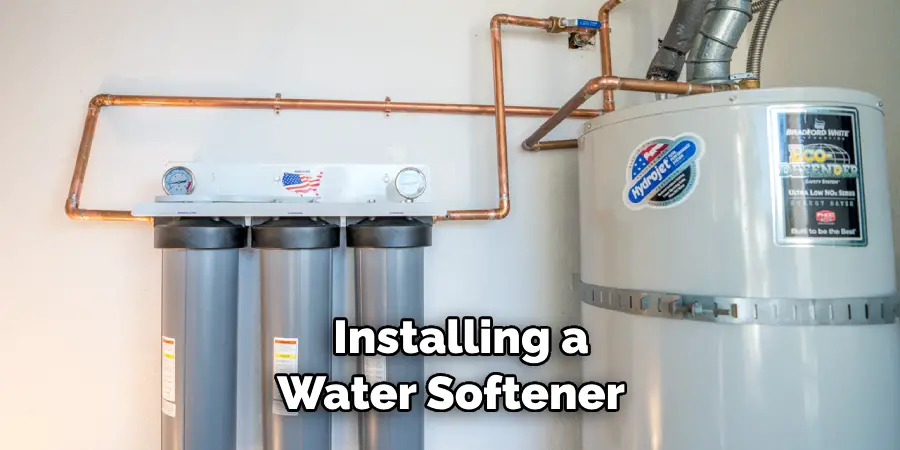
By following these additional maintenance tips on how to defrost a tankless water heater and avoiding common mistakes, you can ensure your tankless water heater functions efficiently and safely for years to come.
Don’t neglect regular maintenance, and always prioritize safety when handling any tasks related to your household appliances. So, keep these tips in mind to maintain a well-functioning and long-lasting tankless water heater.
Frequently Asked Questions
Can I Use Hot Water or Chemicals to Defrost My Tankless Water Heater?
No, it is recommended to avoid using both hot water and chemicals during the defrosting process, as they can cause damage to the unit. Instead, use lukewarm water to gently melt any ice buildup.
How Often Should I Defrost My Tankless Water Heater?
It depends on various factors such as the frequency of use and climate. Generally, it is recommended to defrost your tankless water heater every 6-12 months as a preventative measure. However, if you notice decreased performance or any issues, it may be necessary to defrost more frequently.
What Should I Do if I Encounter Issues During the Defrosting Process?
If you encounter any issues or complications during the defrosting process, it is best to seek professional help. Attempting repairs on your own can lead to further damages and potential safety hazards. Contact a licensed plumber for assistance.
Is It Necessary to Turn Off the Power and Water Supply Before Defrosting?
Yes, it is important to turn off the power source and water supply before attempting any maintenance tasks for your tankless water heater. This will ensure your safety and prevent any potential damages or accidents.
Why Is It Important to Regularly Maintain My Tankless Water Heater?
Regular maintenance helps prolong the lifespan of your tankless water heater, maintain its efficiency, and prevent potential issues or breakdowns. It is also important for safety purposes to ensure the unit is functioning properly at all times. So, make sure to schedule regular maintenance checks with a licensed plumber.
Conclusion
Proper maintenance and handling of your tankless water heater are crucial for its efficiency, longevity, and safety.
By following the tips mentioned on how to defrost a tankless water heater in this guide, you can ensure a safe and successful defrosting experience for your unit. Additionally, incorporating these additional maintenance tips into your routine will help keep your tankless water heater functioning at its best.
Don’t neglect regular maintenance, and always prioritize safety when handling any tasks related to your household appliances. Keep these tips in mind and consult a professional if you encounter any issues or have any questions. With proper care, your tankless water heater will continue to provide hot water for your household’s needs for many years to come.

